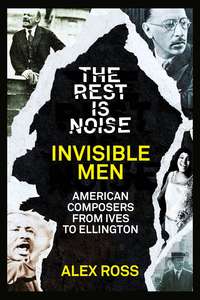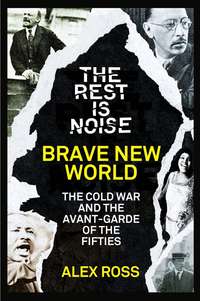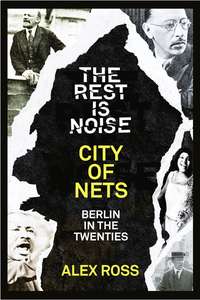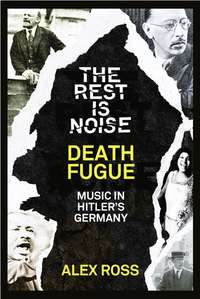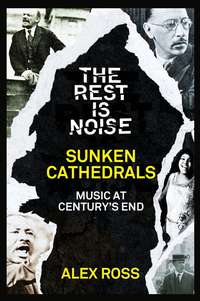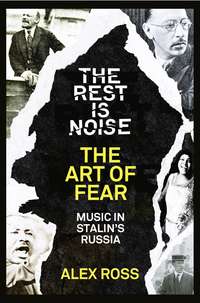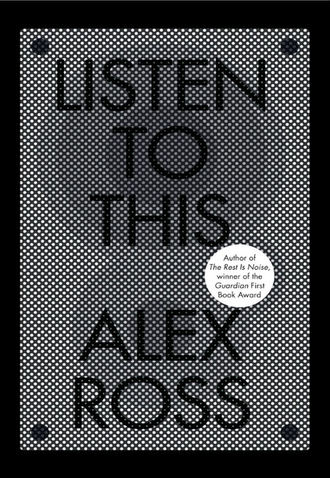
Полная версия
Listen to This
You can find the golden mean running through the Andante of the Sinfonia Concertante for Violin and Viola, from 1779–80. A beguiling four-bar melody appears twice, in E-flat major in the middle and in C minor at the end. The first time, the major mode is briefly shadowed by a turn into the relative minor. The second time, minor is flecked by major, creating the effect of a light in the night. The two passages are more or less the same, but the space between them could contain a novel.
The musicologist Scott Burnham has observed that Mozart offers the “sound of the loss of innocence, the ever renewable loss of innocence.” There is no more potent subject for an artist, and it explains why Mozart remains so vivid a presence. As ever, the slow movement of the Piano Concerto No. 23 sends us into a pensive trance, the finale of the “Jupiter” Symphony wakes us up into a uniquely Mozartian kind of intelligent happiness, and the catastrophic climax of Don Giovanni stirs our primal fear of being weighed in the balance and found wanting. The loss of innocence was Mozart’s, too. Like the rest of us, he had to live outside the complex paradise that he created in sound.
Thousands of books have been written about Mozart, and they present a bewildering variety of images. For a long time, well into the twentieth century, many people pictured Mozart as the “eternal child”—an antic boy-man who happened to write sublime music. This was a theme of Alfred Einstein’s 1945 biography, long considered the standard work. Pushkin, in his play Mozart and Salieri, came up with an influential variant: Mozart as “idle hooligan.” This led to the eternal adolescent of the play and movie Amadeus—a potty-mouthed punk who happened to write sublime music. Other commentators have made Mozart out to be a Romantic in the making or a modernist before the fact—an aloof, tortured character, an agent of sexual subversion, or a clandestine social revolutionary.
Present-day scholars are picking away at the myths and fantasies that have encrusted the composer. They describe him not as a naïve prodigy or a suffering outcast but as a hardworking, ambitious, successful musician—“Mozart as a Working Stiff,” to borrow the title of an essay by Neal Zaslaw. One notable upshot has been the rehabilitation of Leopold Mozart, who long loomed over his son’s life story as an oppressive, even abusive, figure. Maynard Solomon, in his 1995 biography, presented damning evidence against Leopold, writing of the father’s “erotically tinged drive to dominate” his son. Leopold is said to have exploited Wolfgang in his early years, squirreling away profits from their European tours. When the gifted child became a problematic teen, Leopold exhibited an unhealthy possessiveness, opposing his son’s marriage plans and berating him for what he considered spendthrift behavior. His letters contain passages of world-class manipulation. “Your whole intent is to ruin me so you can build your castles in the air,” Leopold wrote in 1778, not long after his wife died while accompanying her son to Paris. “I hope that, after your mother had to die in Paris already, you will not also burden your conscience by expediting the death of your father.”
Leopold was a bit of a monster, but the job of raising the Miracle of Salzburg would have sapped anyone’s patience. Ruth Halliwell made the case for Leopold in her illuminating 1998 book, The Mozart Family. The father didn’t so much exploit the son as make him possible. Those long European tours gave Mozart an incomparable education; he went to London, Paris, Vienna, Milan, and Munich, met the monarchs and princes of the day, and talked to most of the leading composers. Knowing that his son’s musical gifts far exceeded his own, Leopold offered advice on the practical aspects of art and life, in which he was rather better versed. Who can deny the truth of Leopold’s maxim “Where money is plentiful, everything is dear, and where living is cheap, money will be scarce”? Or: “The best way to make people feel ashamed of themselves is to be extremely friendly and polite to those who are your enemies”? Mozart’s path would have been easier if he had absorbed a few of the bland but useful adages that his father passed along.
The letters between father and son become much livelier when music is the subject. On musical matters, the Mozarts are essentially of one mind; Leopold never seems to be reining in his son’s imagination. In late 1780 and early 1781, Mozart was in Munich, preparing his first major opera, Idomeneo, while Leopold was in Salzburg, supervising the librettist. The young composer was unleashing every expressive device available to him: as David Cairns writes, in his 2006 book Mozart and His Operas, Idomeneo touches on “love, joy, physical and spiritual contentment, stoicism, heroic resolution; the ecstasy of self-sacrifice, the horrors of dementia, the agonizing dilemma of a ruler trapped in the consequences of his actions; mass hysteria, panic in the face of an unknown scourge, turning to awe before the yet more terrible fact; the strange peace that can follow intense grief; the infinite tenderness of a father’s last farewell to his son.” Leopold was mostly a bystander to Mozart’s feat, but he did make one crucial contribution: for a pivotal scene in Act III, when the voice of Neptune’s oracle rises from the depths, he requested “moving, terrifying, and altogether unusual” music, and went on to suggest a series of sudden crescendos and decrescendos in the brass and winds, bracketing the vocal phrases. Exactly this effect appears in the finished score.
Perhaps Leopold’s greatest gift to his son was the instruction to compose with both musical insiders and the general public in mind. In a letter from 1782, Mozart takes that favorite phrase of his father’s—“the golden mean”—and weaves around it a pragmatic philosophy that is just as relevant now as it was in the eighteenth century:
These concertos [Nos. 11, 12, and 13] are a happy medium between what is too easy and too difficult; they are very brilliant, pleasing to the ear, and natural, without being vapid. There are passages here and there from which the connoisseurs alone can derive satisfaction; but these passages are written in such a way that the less learned cannot fail to be pleased, though without knowing why … The golden mean of truth in all things is no longer either known or appreciated. In order to win applause one must write stuff which is so inane that a coachman could sing it, or so unintelligible that it pleases precisely because no sensible man can understand it.
One wonders what Mozart would have made of today’s musical scene, where the gap between inanity and unintelligibility is spectacularly wide.
Scholars have also demolished the old picture of Mozart as an idiot savant who transcribed the music playing in his brain. Instead, he seems to have refined his ideas to an almost manic degree. Examination of Mozart’s surviving sketches and drafts—Constanze threw many manuscripts away—reveals that the composer sometimes began a piece, set it aside, and resumed it months or years later; rewrote troubling sections several times in a row; started movements from scratch when a first attempt failed to satisfy; and waited to finish an aria until a singer had tried out the opening. Ulrich Konrad calls these stockpiles of material “departure points”—“a delineation of intellectual places to which Mozart could return as necessary.” In other words, the music in Mozart’s mind may have been like a huge map of half-explored territories; in a way, he was writing all his works all the time. The new image of him as a kind of improvising perfectionist is even more daunting than the previous one of God’s stenographer. Ambitious parents who play the Baby Mozart video for their toddlers may be disappointed to learn that Mozart became Mozart by working furiously hard, and, if Constanze was right, by working himself to death.
In 1991, the Philips label issued a deluxe, complete Mozart edition—180 CDs—employing such distinguished interpreters as Mitsuko Uchida, Alfred Brendel, and Colin Davis. The set was later reissued in a handsome and surprisingly manageable array of seventeen boxes. One day I transferred it to my iPod and discovered that Mozart requires, at the minimum listenable bitrate, 9.77 gigabytes.
On a computer, you can use search functions to create cross-sections of Mozart—a dreamworld of adagios, a neo-Baroque swirl of fantasias and fugues, a nonet of quintets (all major works). To listen to his twenty-seven settings of the Kyrie is to appreciate his inexhaustible invention: they range from the ravishingly sweet to the forbiddingly severe, each a convincing simulacrum of the power of the Lord. But the obvious challenge was to go through the whole megillah—to begin with the Andante in C Major (K. 1a), which Mozart wrote when he was five, and proceed to the bitter end, the Requiem (K. 626), which he left unfinished at his death, at thirty-five. It took me three months. I can’t claim to have given every bar close attention—a patch of recitative in the early opera La finta semplice (The Pretend Simpleton) was disrupted by a protracted public-address announcement at Detroit Metro Airport, and most of the Contredanse No. 4 in F (K. 101) was drowned out by the crack drum corps Drumedies performing in the Times Square subway station—but I did get a bird’s-eye view of Mozart’s achievement, and was more in awe than ever.
From the start, the music is astonishingly well made. (A caveat from the scholarly demythologizers: most of the earliest works were “corrected” by Leopold.) Young Mozart shows an uncanny ability to mimic the styles and forms of the day: Baroque sacred music, opera buffa and opera seria, Gluckian reform opera, Haydn’s classicism, the Mannheim symphonic school, Sturm und Drang agitation, and so on. Quite a bit of the music is reassuringly routine; Hermann Abert writes, in his massive 1921 biography of the composer, that Mozart “evolved along sound lines, without any supernatural leaps and bounds.” But very early there are flashes of individuality. Some of the first come in the London Sketchbook, which dates from Mozart’s London sojourn of 1764 and 1765 (and which Leopold did not touch). A piece in G minor (K. 15p) features a stormily descending chromatic bass line—a Bachian gesture with a trace of boyish impudence. A piece in E-flat major (K. 15kk) has gently murmuring chords and mournful slips into the minor, forecasting time-suspending andantes and adagios to come.
Hearing so many premonitions of future masterworks, I got the feeling that Mozart’s brain contained an array of musical archetypes that were connected to particular dramatic situations or emotional states—figures connoting vengeance, reconciliation, longing, and so on. One example appears in La finta semplice, the merry little opera buffa that Mozart wrote when he was twelve. In the finale, when all misunderstandings are resolved, there is a passage marked “un poco adagio,” in which Giacinta and her maid Ninetta ask forgiveness for an elaborate ruse that they have pulled on Giacinta’s brothers. “Perdono,” they sing—“Forgive.” Not just the words but the music prefigures the stupendous final scene of The Marriage of Figaro, in which the wayward Count asks the Countess’s forgiveness—“Contessa, perdono!”—and she grants it, in a half-hopeful, half-heartbroken phrase. I looked at the New Mozart Edition scores side by side, and noticed that the two passages not only waver between the same happy-sad chords (G major and E minor) but pivot on the same rising bass line (B-C-D-E). It is unlikely that Mozart thought back to La finta semplice when he composed Figaro, but the idea of forgiveness apparently triggered certain sounds in his mind.
As Mozart grows toward adulthood, there is a palpable thrill of emergence. The routine becomes rare, the extraordinary ordinary. Having proved himself as an able technician of theatrical and sacred music (Lucio Silla, of 1772, and the Sacramental Litany, of 1776, are high-water marks of his youth), Mozart now imports exterior drama and interior reflection to instrumental genres: the hard-driving Symphony No. 25 in G Minor, the swashbuckling violin concertos of 1775, the spacious String Quintet No. 1 in B-flat, and, most strikingly, the Piano Concerto No. 9, which is a three-act instrumental opera of energetic play, melancholy withdrawal, and happy return. Whether any of these forward leaps can be connected with events in Mozart’s life remains a matter of debate. Did the traumas of 1778—the failure of his venture to Paris, the death of his mother, Leopold’s scathing criticism—create in Mozart a new musical maturity? During that Paris summer, Mozart wrote his taut, tense Piano Sonata in A Minor, another landmark in his development. The trouble is that we don’t know whether it was written before or after Maria Anna’s death, and, in the absence of other information, we have to assume that one day Mozart banged an A-minor chord like a wedge into the middle range of the piano and liked the way it sounded. Stanley Sadie, in his 2005 book Mozart: The Early Years, concludes unsentimentally, “There is no real reason to imagine that [Mozart] used his music as a vehicle for the expression of his own personal feelings.”
Then again, it’s hard not to see some connection between the life and the art in the period from 1781 to 1786, when a series of independent acts—Mozart’s escape from Salzburg to Vienna, his marriage to Constanze, his defiant response to Leopold’s objections to the above—coincides with a staggering outpouring of inspiration: the six string quartets dedicated to Haydn, fifteen concertos for piano and orchestra, the “Haffner” and “Linz” and “Prague” Symphonies, the Mass in C Minor, the operas The Abduction from the Seraglio and The Marriage of Figaro, and a dozen other pieces without which classical programming would grind to a halt. The instrumental works, with their architecturally imposing first movements and their slow movements that open up multiple inner worlds, are the most expansive of their time, looking forward to Beethoven only insofar as Beethoven looked back at them. Yet the futuristic broadening of scope is made possible by a study of the past; Mozart immerses himself in the art of Bach, prompted by a fad for old music in aristocratic circles. (The emperor liked fugues.) Also, in the slow movements spasms of dissonance are used to offset the surplus of beauty; Scott Burnham notes that the famous Andante of the Concerto No. 21 contains a quietly shuddering five-note collection that is not so much a chord as a cluster. Counterpoint and dissonance are the cables on which Mozart’s bridges to paradise hang.
Mozart’s operas, meanwhile, abandon artifice in favor of moment-to-moment psychological realism. In The Abduction from the Seraglio, Belmonte ventures into the Ottoman Empire in search of his kidnapped love, Constanze. Having learned that she is nearby, he sings of the anxious beating of his heart (“O wie ängstlich, o wie feurig”). The heartbeat is indicated in a soft but insistent pattern of falling thirds, in which, Mozart wrote proudly to his father, “you see the trembling, the faltering.” A fluttering, innocent-sounding kind of worry is suggested by rapid runs of flute and muted violins. Toward the end of the aria, the “throbbing” figure comes back in the minor mode, and it is reinforced by winds in unison. It ends up sounding obsessive and fearful—a lover’s paranoia creeping in. This insistent deepening of an ostensibly comic situation would become Mozart’s signature in the next several years; The Marriage of Figaro, Don Giovanni, and Cosìfan tutte, the three operas that he created in tandem with his ideal librettist, the Italian Jewish polymath Lorenzo Da Ponte, sprawl across the boundary between the comic and the tragic, defining life as what happens in between.
After 1786, the storm of style abates slightly. In this period, Mozart was no longer attracting sufficient numbers of subscribers to his public concerts, in part because of the economic effects of an expensive war with Turkey. So the production of piano concertos tapers off, and there are no symphonies after the “Jupiter,” of 1788. Instead, the completist listener must get through thickets of minuets, contredanses, and other popular dances, the result of Mozart’s new, revenue-enhancing job as the emperor’s Kammermusicus. These pieces are a little exasperating in large quantity, but they are full of witty, even zany details, and serve as a reminder that eighteenth-century composers were expected to be adept at producing both “popular” and “serious” styles. Period dances are deployed to dramatic effect in the ballroom scene in Don Giovanni, in which an aristocratic minuet, a popular contredanse, and a working-class Deutscher unfold simultaneously, in three different meters. The episode demonstrates Mozart’s ability to move as a free agent through the social and cultural hierarchies of his time.
In his last years, Mozart is less prolific than before. He seems to be groping his way toward a new style, more concise in form and more melodically compressed. Charles Rosen, in his book The Classical Style, isolates a telltale episode in the Adagio of the String Quintet in D (1790)—a quietly radical sequence in which, as Rosen writes, “four completely different kinds of rhythm [are] superimposed in a contrapuntal texture at once complex and deeply touching.” One violin moves up by steps, the other moves haltingly down, the two violas sigh on repeated seconds and thirds, and the cello undermines the harmony with a jazzy pizzicato figure that plunges down an octave and a half. Right afterward comes a radiant little theme of rising-and-falling phrases, which brings back one of the oldest recurring motifs in Mozart’s language—an archetype of love or longing. There is something elegiac in this gesture toward the past; Mozart, near the end, goes back to his beginnings. Yet it is hazardous to connect the elusive emotions of the late works with the fact of the composer’s approaching death. Julian Rushton wryly notes that critics used to detect “feelings of impending doom” in the Clarinet Concerto and the Piano Concerto No. 27, both of which appeared in Mozart’s final year; it turns out that the first movement of each was sketched several years earlier.
What Mozart might have done next is no one’s guess. The pieces that emerged from the suddenly productive year 1791—The Magic Flute, the ultimate Leopoldian synthesis of high and low; La clemenza di Tito (The Clemency of Titus), a robust revival of the aging art of opera seria; the silken lyricism of the Clarinet Concerto; the Requiem, at once cerebral and raw—form a garden of forking paths. Mozart was still a young man, discovering what he could do. In the unimaginable alternate universe in which he lived to the age of seventy, an anniversary-year essay might have contained a sentence such as this: “Opera houses focus on the great works of Mozart’s maturity—The Tempest, Hamlet, the two-part Faust—but it would be a good thing if we occasionally heard that flawed yet lively work of his youth, Don Giovanni.”
With the Mozart myths perpetually rising out of the ground where scholars have tried to bury them, the usefulness of Don Giovanni is that it puts a stake through the heart of the chocolate-box Mozart, the car-radio Mozart, the Mozart-makes-you-smarter Mozart. If the opera were played in bus stations or dentists’ waiting rooms, it would spread fear. It might cause perversion in infants. No matter how many times you hear the punitive D-minor chord with which the opera begins, or the glowering diminished seventh that heralds the arrival of the stone statue of the Commendatore (“Don Giovanni, you invited me to dinner, and I have come”), it generates a certain mental panic. Mozart’s harmonies of disaster are all the more terrifying because they break through the frame of what purports to be a saucy comedy about an aristocratic rake—a successor to Figaro. The fact that Figaro is actually quoted in the score—“Non più andrai” is one of the airs that the Don enjoys at dinner, just before the Commendatore arrives—suggests that Mozart is consciously subverting his reputation as a supplier of ambient musical pleasure.
The scholars Lydia Goehr and Daniel Herwitz have put together an anthology titled The Don Giovanni Moment, which leaves aside the discussion of who Mozart really was and addresses the music’s impact on Western culture. That influence is enormous; if you wanted to locate the moment at which the Enlightenment gave way to the Romantic age, you might well settle on Don Giovanni. As various writers in The Don Giovanni Moment recount, Goethe set to work in earnest on his Faust after seeing a performance of Don Giovanni, in 1797; Kierkegaard was excited by the “sensuous genius” of Mozart’s music, and by the Don’s chase after erotic release; the ambivalent liberal Pushkin was torn between the Don’s swagger and the Commendatore’s rectitude; George Bernard Shaw riffed on the opera in Man and Superman, letting the Don end up in heaven. Wagner was deeply in Mozart’s debt; when the tragic god Wotan sings the words “Das Ende!” in the Ring, he traverses the same intervals with which the Commendatore intones Don Giovanni’s name.
The leading Romantic rhapsodist of Don Giovanni was the novelist, storyteller, critic, and composer E.T.A. Hoffmann, whose 1813 story-essay “Don Juan” is analyzed by Richard Eldridge in the anthology. For Hoffmann, the character of the Don is uninteresting on paper—“a bon vivant who loves wine and girls immoderately, who arrogantly invites the stone man, who portrays the old father whom he cut down in self-defense, to join him at his festive table.” Mozart’s music transforms the Don into a radical sensualist, a seeker of extremes. But he is a Romantic gone to seed: infinite longing devolves into sexual predation, a contempt for the ordinary curdles into cynicism. On the other side stands Donna Anna, the Commendatore’s daughter, whom the Don attempts to rape in the first scene of the opera. Hoffmann’s narrator speculates that Donna Anna actually succumbed to the Don’s advances, and swears vengeance to cover up her shame. Hoffmann is right in hearing something weirdly violent in Donna Anna’s utterances, especially the aria “Or sai chi l’onore” and the ragged recitative that introduces it. There is a blackness at the heart of her righteousness, just as there is a life force in the Don’s malice. Mozart’s quest for middle ground takes him into the risky space between good and evil. Both the terms and the outcome of this “conflict between godly and demonic powers,” as Hoffmann called it, are murky.
When the Don finally goes down to hell, you are not sure whether you are hearing infernal legions celebrating his arrival or the armies of heaven rather too enthusiastically enjoying their capacity for destruction—or, perhaps, some unholy concert of the two. The scene is structured around a staggered sequence of upward-creeping lines, sometimes in the bass and sometimes in the treble. Twice, the strings embroider that pattern with vehement up-and-down scales, and the fact that each scale is a half-step higher than the previous one gives the impression that the music is obliterating everything in its path, like a death machine in a medieval etching. Toward the end, a thumping four-note figure comes to the fore; it recalls the Commendatore knocking at the door but ends up sounding like the stomping of feet.
At the same time, as Michel Noiray observes in The Cambridge Mozart Encyclopedia, the scene has an archaic, religious aspect, echoing Renaissance and Baroque sacred music. In the first bars of the opera, immediately after the colossal opening chords, Mozart revives the device of the chromatic lamento bass. There might be a certain irony in the gesture; Peter Williams calls it “fate being underlined with a familiar and mundane formula, like doggerel verse in Faust.” When the Commendatore exacts his revenge, the formula is reversed: instead of trudging down, as in the “Crucifixus” of Bach’s B-Minor Mass, the bass line plows relentlessly upward. As it happens, the same effect appears in several of Mozart’s youthful masses, in settings of the word “Crucifixus.” In addition, Mozart probably took inspiration from the hectic, dissonant dance that concludes Gluck’s 1761 ballet Don Juan—a diabolical chaconne in the key of D minor. For perhaps the first time in musical history, references to the past become a modernist gesture, a radical haunting.




